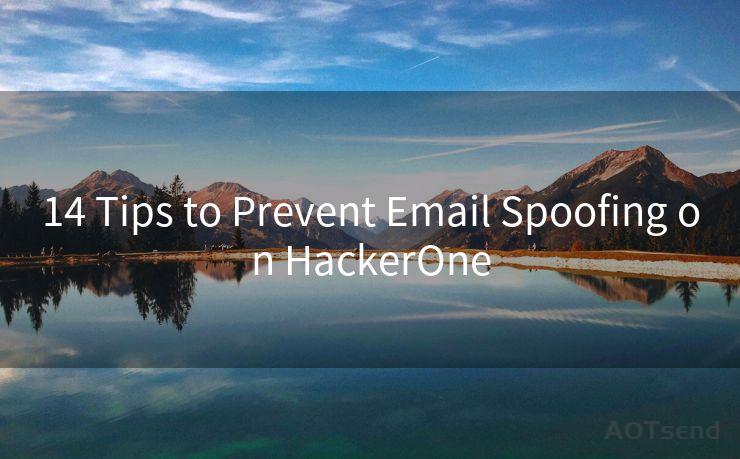14 Tips to Prevent Email Spoofing on HackerOne




Email spoofing is a serious threat to personal and organizational security, as it allows attackers to impersonate legitimate senders and potentially gain access to sensitive information. HackerOne, a popular platform for hackers and security researchers, often discusses such threats and ways to mitigate them. In this article, we'll explore 14 tips to help you prevent email spoofing, keeping your digital communications secure.
1. Use SPF Records
Sender Policy Framework (SPF) records help verify that an email claiming to come from your domain actually originates from an authorized mail server. Implementing SPF can significantly reduce the chances of spoofing.
2. Enable DKIM Signing
DomainKeys Identified Mail (DKIM) allows you to digitally sign your emails, ensuring their authenticity. When an email server receives a DKIM-signed message, it can verify the signature to confirm the email's origin.
3. Utilize DMARC
Domain-based Message Authentication, Reporting, and Conformance (DMARC) is a protocol that helps email receivers determine how to handle unauthenticated emails claiming to be from your domain. By setting up DMARC, you can specify how to treat emails that fail SPF or DKIM checks.
4. Train Employees on Email Security
Regularly educate your team members on email security best practices. This includes recognizing spoofed emails and avoiding suspicious links or attachments.
5. Use Strong Passwords
Ensure all email accounts use strong, unique passwords to reduce the risk of account hijacking, which could lead to spoofing attempts.
6. Enable Two-Factor Authentication
Adding an extra layer of security with two-factor authentication (2FA) makes it harder for attackers to gain access to email accounts, even if they have the password.
7. Regularly Update Software
Keep your email server and client software up to date to ensure you have the latest security patches and protections.
8. Monitor Email Traffic
Regularly monitor outbound email traffic to identify any suspicious or unauthorized activity that may indicate spoofing attempts.
9. Implement Email Filtering
Use email filtering solutions to block known spoofing domains and suspicious email patterns.
10. Avoid Public WiFi for Sensitive Communications
Public WiFi networks are often insecure, making it easier for attackers to intercept and spoof emails. Use a VPN or wait until you're on a secure network for sensitive communications.
11. Verify External Links and Attachments
Before clicking on any external links or downloading attachments, always verify the sender and the context of the email.

12. Report Suspicious Emails
🔔🔔🔔
【AOTsend Email API】:AOTsend is a Managed Email Service for sending transactional emails. Support Email Types: reminders, authentication, confirmations, notifications, verification codes, invoices, password resets, account activations, billing statements, two-factor authentication (2FA), and one-time passwords (OTP) emails, etc. $0.28 per 1000 Emails. 99% Delivery, 98% Inbox Rate.
You might be interested in:
Why did we start the AOTsend project, Brand Story?
What is a Managed Email API, How it Works?
Best 25+ Email Marketing Platforms (Authority,Keywords&Traffic Comparison)
Best 24+ Email Marketing Service (Price, Pros&Cons Comparison)
Email APIs vs SMTP: How they Works, Any Difference?
If you receive a suspicious email claiming to be from your organization, report it immediately to your IT department or email provider.
13. Use Encrypted Email Services
Consider using encrypted email services for sensitive communications. This adds another layer of protection, ensuring that even if an email is intercepted, the content remains secure.
14. Conduct Regular Security Audits
Periodically review your email security measures to identify any potential vulnerabilities and address them promptly.
By following these 14 tips, you can significantly reduce the risk of email spoofing and protect your organization from potential threats. Remember, email spoofing is a serious issue, and staying vigilant is key to maintaining secure communications. At HackerOne, we value the security of our community and encourage everyone to adopt these best practices.




Scan the QR code to access on your mobile device.
Copyright notice: This article is published by AotSend. Reproduction requires attribution.
Article Link:https://www.mailwot.com/p1841.html



